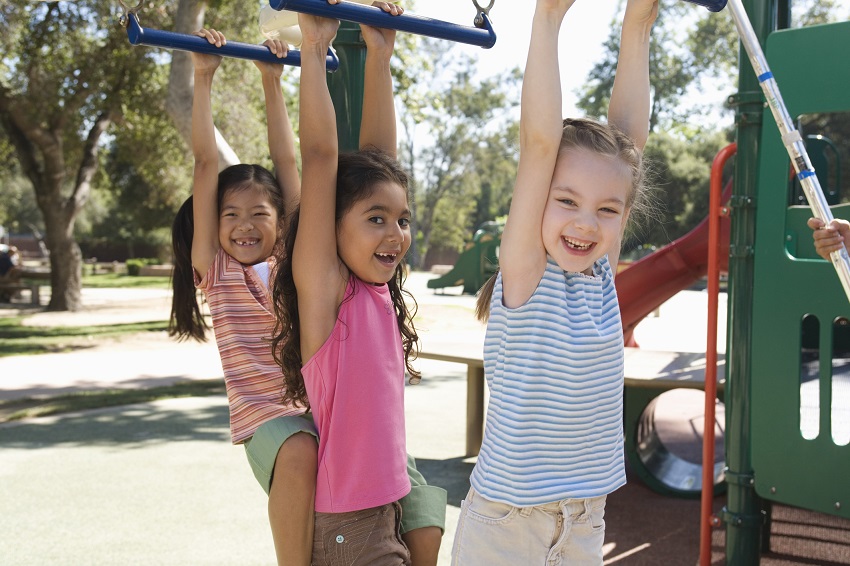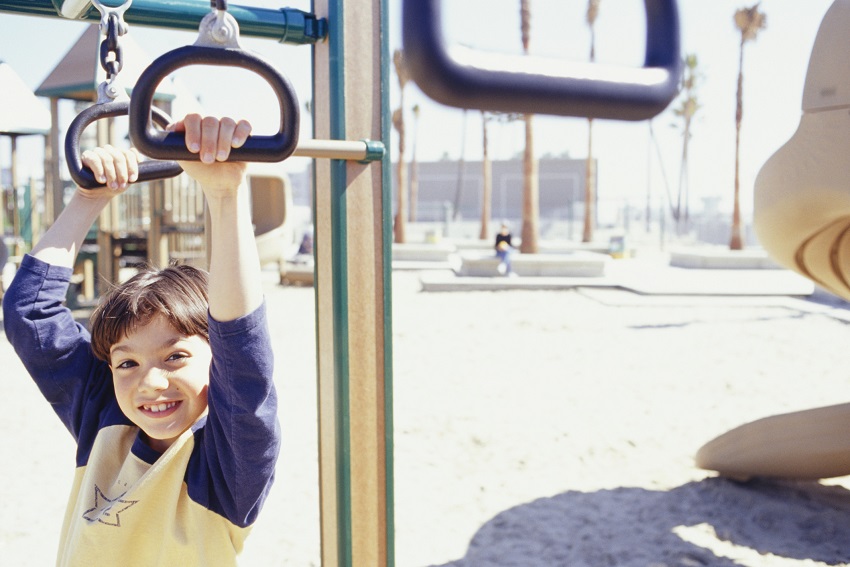How Recess Affects Your Child's Well-Being
Posted in

Kids often name recess as one of their favorite parts of the school day. While they may not be spending that time on schoolwork, they’re learning a lot more at recess than we may realize. Recess is a crucial part of the day, affecting our children far beyond the playground.
Is recess on the decline in Oklahoma?
Although recess is widely considered to be disappearing on the whole, most American elementary students still have a daily recess. A U.S. Department of Education survey found that 88 percent of first graders participate daily in recess, along with 83 percent of sixth graders.
Oklahoma law requires public elementary schools to offer 60 minutes of structured physical education (P.E.) per week for students in full-day kindergarten through fifth grade. Schools are also required to incorporate at least 20 minutes per day of recess in addition to the 60 minutes of weekly P.E. The Oklahoma Board of Education strongly advises school districts to encourage physical activity breaks throughout the day, physical activity clubs and special events, but these decisions are left to the discretion of each district.
What is on the decline is the amount of recess given. Time previously spent at recess is being shifted to the classroom as academic performance standards rise. However, the American Academy of Pediatrics agrees that decreasing recess time may actually be counterproductive to academic achievement.
The changing role of recess
Recess is not just another break in the school day for using the restroom or getting a drink. Time spent on the blacktop or playground with classmates and friends plays a critical role in developing a well-rounded, healthy child. Free play at recess is not only a mental break from the rigors of the classroom and a time for the mind to recharge, but also has proven benefits for cognitive, social, emotional, and physical growth. At recess, children hone skills in conflict resolution, sharing and negotiating, leadership and collaboration. Playing games, establishing rules and following those rules exercise not only the body, but the imagination.
It’s no secret that childhood obesity rates are on the rise, and recess, by itself, will not reverse this trend. However, studies show that compared to children who remain sedentary all day, children who are active during the day are more active after school and sleep better, as well. Playing outside during recess builds a child’s immune system, helps alleviate depression and anxiety, and contributes to more consistent school attendance overall. Unstructured physical activity at recess builds a foundation for an active, healthy lifestyle from an early age.
A time for autonomy
Recess and P.E. class are not the same thing, nor are they substitutes for one another. P.E. is instructional time with a teacher in control, whereas recess allows the children to control their own activities. That autonomy factor is key. After-school clubs, play dates and sports teams are also productive activities, but again, these opportunities are typically structured and led by an adult. At recess, each child gets to personally choose whether they want to be social, physically active, creative, or if they just want to rest. Recess is a chance for children to organize their own activities, choose their own playmates and take ownership of their time.
Do the variations in recess matter?
Many schools hold recess at the end of lunchtime so children can head outside after they finish their meal. The problem with this set-up, however, is that kids are so eager to get outside, they rush through eating and end up wasting food, especially fruits and vegetables. The American Academy of Pediatrics suggests that having recess before rather than after lunch is a better approach. After making the switch, researchers observed the students had bigger appetites at lunch and took their time to eat healthier foods, which improved concentration in the classroom throughout the afternoon.
Recess tends to vary by school on the degree to which it is supervised and organized. While intended to be a time of free play for children, having a designated recess monitor initiating games and activities has been shown to increase overall feelings of safety and encourages higher levels of active physical participation, especially in girls. Teachers can get to know their students on a different level by observing how they interact on the playground, and can use their observations to better manage their classroom and prevent bullying.
How one Oklahoma school is reinvigorating recess
Chattanooga Public School is the first elementary school in Oklahoma to test an inventive new recess model called Let’s Inspire Innovation ‘N Kids, pioneered by Texas Christian University. In the Liink Project’s model, participating schools seek to put more emphasis on physical activity and character education, offering four 15-minute recesses per day as opposed to the standard 20 minutes. So far, the results are very positive. Teachers report their students are more focused, tattle less often, listen more attentively, follow directions better and attempt solving more problems on their own before asking for help. Discipline issues have decreased, and overall morale among students has improved.
Want to know more?
Commonly viewed for years as a break in a monotonous day or just a chance to swing on the monkey bars, recess plays a role in our children’s development more crucial now than ever before. As schools shift to a focus on core curriculum, it’s important not to overlook how recess helps mold a well-rounded child who is physically healthy, confident and resilient.


